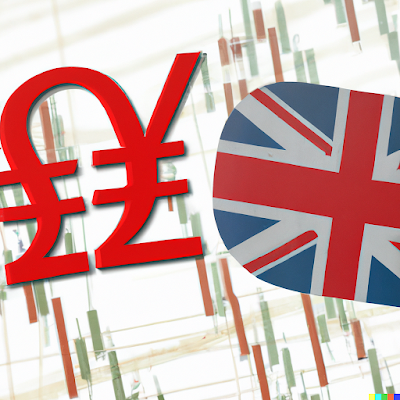GBPUSD vs GBPJPY - Which Pair should you Trade?
It's difficult to say which currency pair is "best" to trade, as it depends on a variety of factors, including market conditions, your trading objectives, and your risk tolerance. Both the GBPUSD and GBPJPY currency pairs have their own unique characteristics and can present different trading opportunities.
The GBPUSD pair represents the value of the British pound (GBP) in terms of the US dollar (USD). This pair is commonly referred to as "cable" and is known for its high liquidity and volatility. The GBPUSD pair can be influenced by a variety of economic, political, and market factors, such as interest rates, inflation, and economic growth in the UK and the US.
The GBPJPY pair represents the value of the British pound in terms of the Japanese yen (JPY). This pair is known for its high volatility and can be influenced by a variety of economic, political, and market factors, such as interest rates, inflation, and economic growth in the UK and Japan.
 |
| GBPUSD vs GBPJPY |
In general, traders should consider their trading objectives, risk tolerance, and market conditions when deciding which currency pair to trade. It's important to do thorough research and to use a variety of analysis tools and techniques, such as technical analysis and fundamental analysis, to make informed trading decisions.
Factors affecting GBPUSD
Here are some of the main factors that can affect the GBPUSD pair:
Interest rates: Interest rates play a key role in the value of a currency, as higher interest rates can make a currency more attractive to investors. Changes in interest rates in the UK and the US can impact the demand for the GBPUSD pair and lead to price movements.
Inflation: Inflation can affect the value of a currency by eroding its purchasing power. If inflation is higher in one country compared to another, it can impact the demand for the currency and lead to price movements.
Economic growth: Economic growth can impact the demand for a currency, as a growing economy can lead to increased trade and investment. Economic growth in the UK and the US can impact the demand for the GBPUSD pair and lead to price movements.
Political events: Political events, such as elections, policy changes, and geopolitical tensions, can impact market sentiment and lead to price movements in the GBPUSD pair.
Market liquidity: The GBPUSD pair is a major currency pair and is generally considered to be highly liquid. However, market liquidity can vary, and periods of low liquidity can lead to increased volatility as prices may be more prone to rapid changes.
Factors affecting GBPJPY
There are several factors that can contribute to the volatility of the GBPJPY pair:
Economic and political uncertainty: The GBPJPY pair can be influenced by economic and political events and trends in both the UK and Japan. Economic and political uncertainty can lead to increased market volatility as investors and traders react to changing conditions.
Interest rate differentials: The GBPJPY pair can be affected by changes in interest rates in the UK and Japan. If the interest rate differential between the two countries widens or narrows, it can impact the demand for the currency pair and lead to price movements.
Cross-border trade and investment: The GBPJPY pair can be influenced by cross-border trade and investment flows between the UK and Japan. Changes in the level of trade and investment between the two countries can impact the demand for the currencies and lead to price movements.
Market liquidity: The GBPJPY pair is a major currency pair and is generally considered to be highly liquid. However, market liquidity can vary, and periods of low liquidity can lead to increased volatility as prices may be more prone to rapid changes.
Overall, the GBPJPY pair is known for its high volatility, which can present both opportunities and risks for traders. It's important for traders to be aware of the potential for price movements and to use risk management strategies to help mitigate potential losses.
Comments
Post a Comment